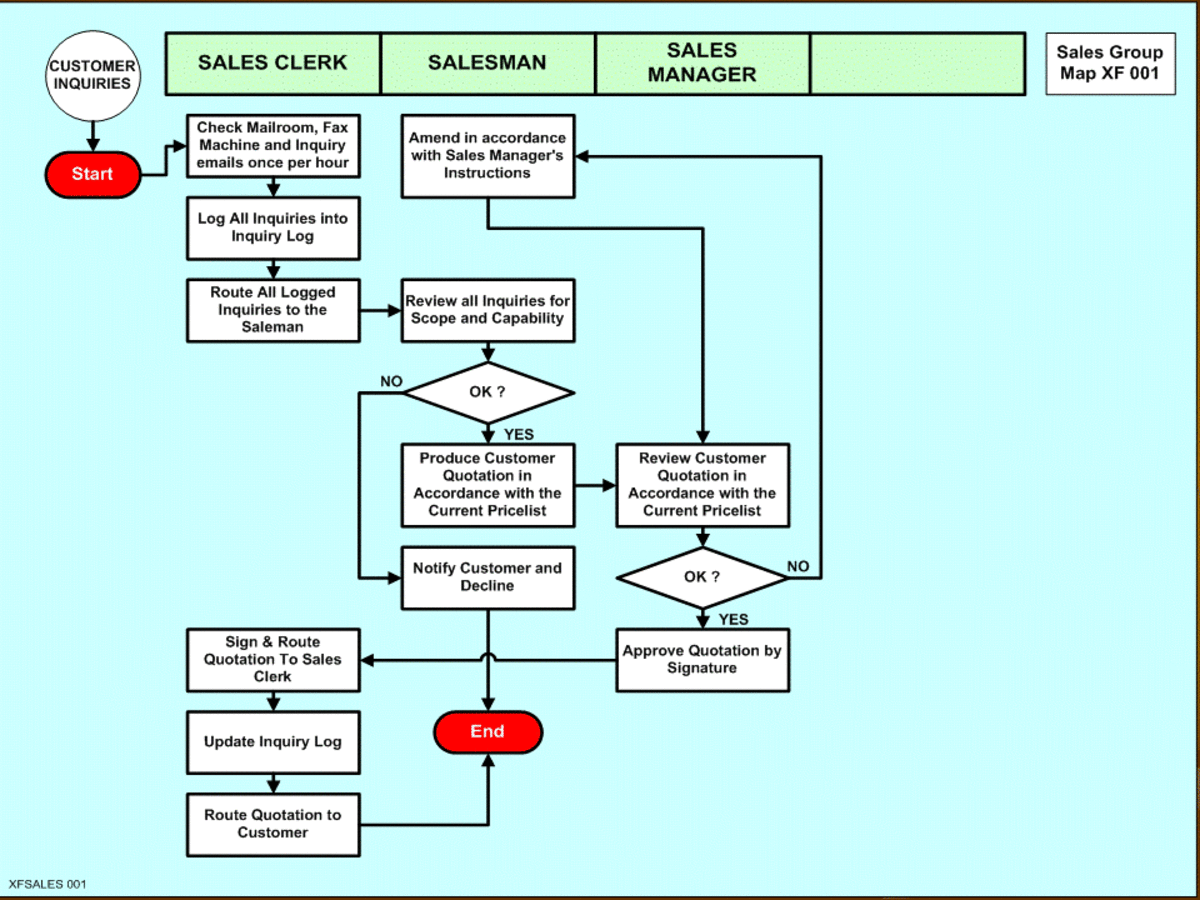Quality Standards Procedures Sample
SOP Sections. Purpose: This section describes the reason the document has been created. This information should be presented as a short paragraph that states the nature of the procedure and why your business performs it. Scope: Next, the SOP provides a short paragraph that describes which activities are under the purview of the procedure. Definitions: Here, you define any of the procedure’s terms that need special clarification.

This section is industry-dependent and can be omitted, if it isn’t relevant or necessary. References: This section lists other supporting documents and material, such as a quality manual or an international standard. This section is also industry-dependent, and in some cases, may be omitted, especially if the procedures are self-explanatory. Requirements: This is your opportunity to describe any requirements that must be in place before executing the procedure, such as personnel training to build the necessary skills. Responsibilities: This section explains who is responsible for which aspects of the procedure. Procedure steps: This section will provide step-by-step instructions that describe how to perform the business activity. It is important to make the instructions unambiguous.
Shorter sentences are easier to follow, especially if steps that must be performed sequentially. Divide it into several shorter sections if it is too long.Simple Example of Standard Operating ProceduresHere is a simple SOP for a bank to verify the identity of a walk in costumer. Purpose: This procedure describes the steps required to verify customer identity. Scope: This procedure applies to any walk-in customer or a customer at the drive-by windows of all branches of ACME Bank.
The purpose of this Standard Operating Procedure (SOP) is to describe types of Quality Assurance/Quality Control (QA/QC) samples that are collected in the field, or prepared for or by the laboratory for soil and water matrices. The following are standard operating procedures which, under certain circumstances, may need to be changed or varied. Writing Procedures: How to Document Your Quality System Effectively 2 Writing Procedures: How to Document Your Quality System Effectively A024XC10283 (Procedures) Issue 1 2 Standards - Aaaarghh! Standards are friendly beasts and it’s really easy to get to know them. Most people don’t realise that standards make life easier! Quality System Procedures (ISO 9001:2000) AAG Land Survey QSP- First Edition. GENERAL INFORMATION This manual is the property of AAG LAND SURVEY. Neither the whole nor any part of this manual may be disclosed. 4.7.3 All the standards are stamped as “CONTROLLED COPY” on the cover page of the standard.
Responsibilities: All branch employees that perform cashier duties have the responsibility to verify customer identity. Verification of Customer Identity: Each cashier must verify each customer’s identity before performing cash withdrawals or making transfers between accounts. The cashier must request a photo ID from the customer and verify that the name on the ID matches the name on the account, and that the customer is, in fact, the person pictured on the photo ID.How to Use SOPsManagers use SOPs to communicate to staff and explain how to perform certain company operations. Employees can use SOPs for reference when learning to complete certain tasks according to established protocols. Regulatory agencies, such as the Food and Drug Administration, use SOPs when determining whether a company’s processes meet agency standards.
Quality is a biased term which typically means that a product or service satisfies customer expectations. Quality Management Systems are usually comprised of descriptions for the company structure, responsibilities assigned to personnel, processes to follow so that work flows from one organization to another, step-by-step procedures used to conduct business in a consistent manner and resources to draw upon to do the best job possible. These procedures must be clearly documented so that all personnel can follow the steps. Developing ProceduresThe International Organization for Standardization maintains standards for ensuring quality.
In particular, the ISO 9001 standard requires that a compliant company has a set of procedures, processes, records, defect inspection and scheduled reviews to enable continuous improvement. At your company, you may wonder why all of this is necessary. Ask yourself a few basic questions. Would ensuring that everyone is following the same procedures improve company operations?
Does your staff know everything they need to know about customer requirements? Is it important to you that everyone at all levels of the company be able to describe the company goals and objectives when asked? Do you think your employees feel involved and committed to continuous improvement?If you answered yes to two or more of these questions, you may find significant benefit in defining, documenting and enforcing procedures to make things work more efficiently. Many companies find that they are able to reduce costs and improve customer satisfaction by implementing a set of core procedures. Your procedures may be more useful if they include descriptive visual depictions to accompany procedural text. Use process maps and charts to define the flow. Ensure that the information is available in the languages of those who need to follow the procedures.
SimplifyYou may find you need fewer procedures than you thought. Having the right simple procedures in place is more important than having a large number of complex ones. Maintain a single master copy and ensure that you have the appropriate mechanisms available to validate and update the procedures in your company as business conditions change.For example, if your business has suffered dramatic increases in support call volumes, consider analyzing the types of calls you are receiving. Are there any trends?
Quality Standards Procedures Sample Report
Is any one product, service or issue recurring on a regular basis? What could be the root cause of the problem? By analyzing the data you uncover, you may find that establishing procedures to respond proactively to top issues can mitigate the repeat of such events in the future and increase customer approval and loyalty. At the very least, you can minimize the risks associated with being ill prepared for handling problems.